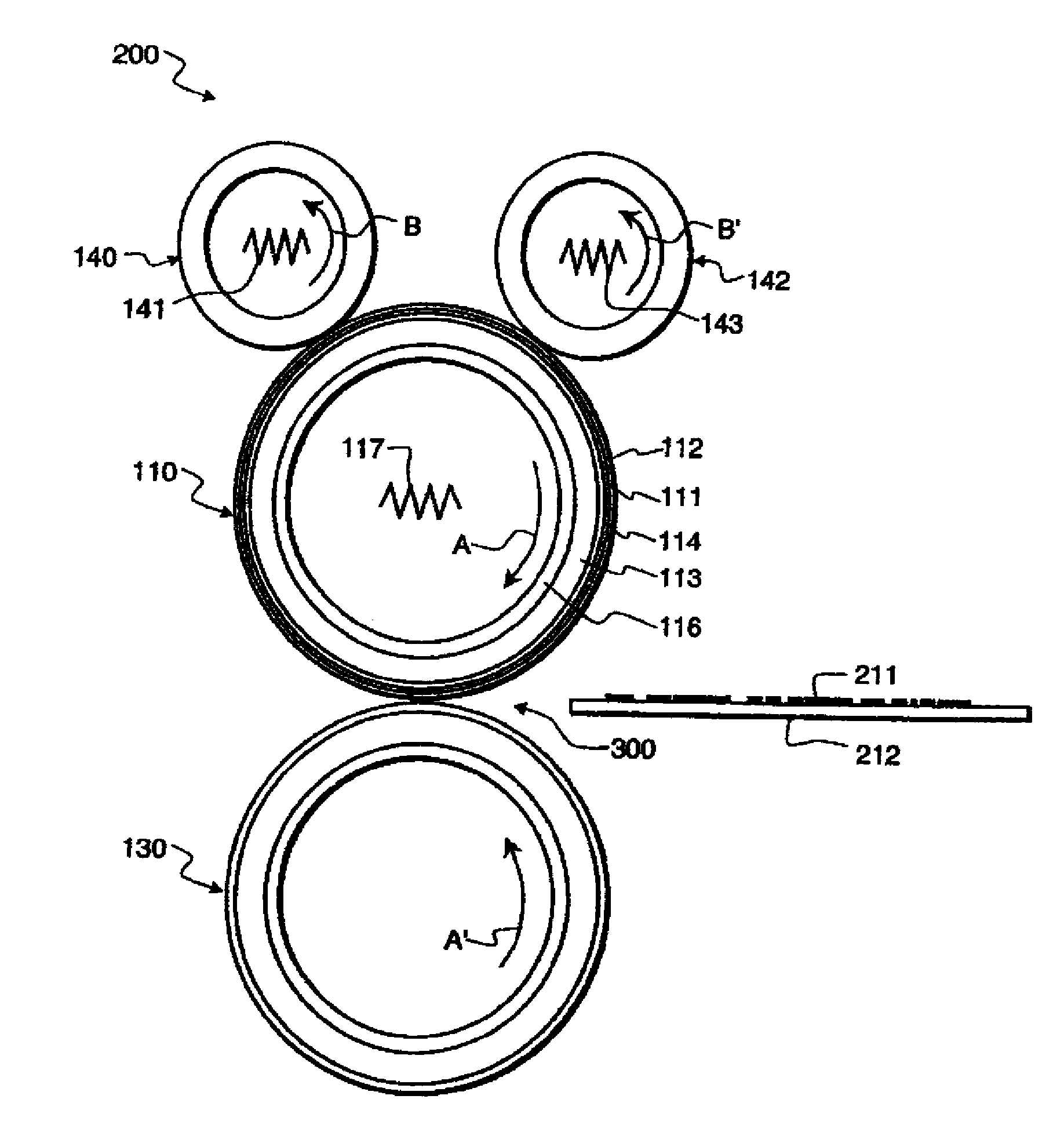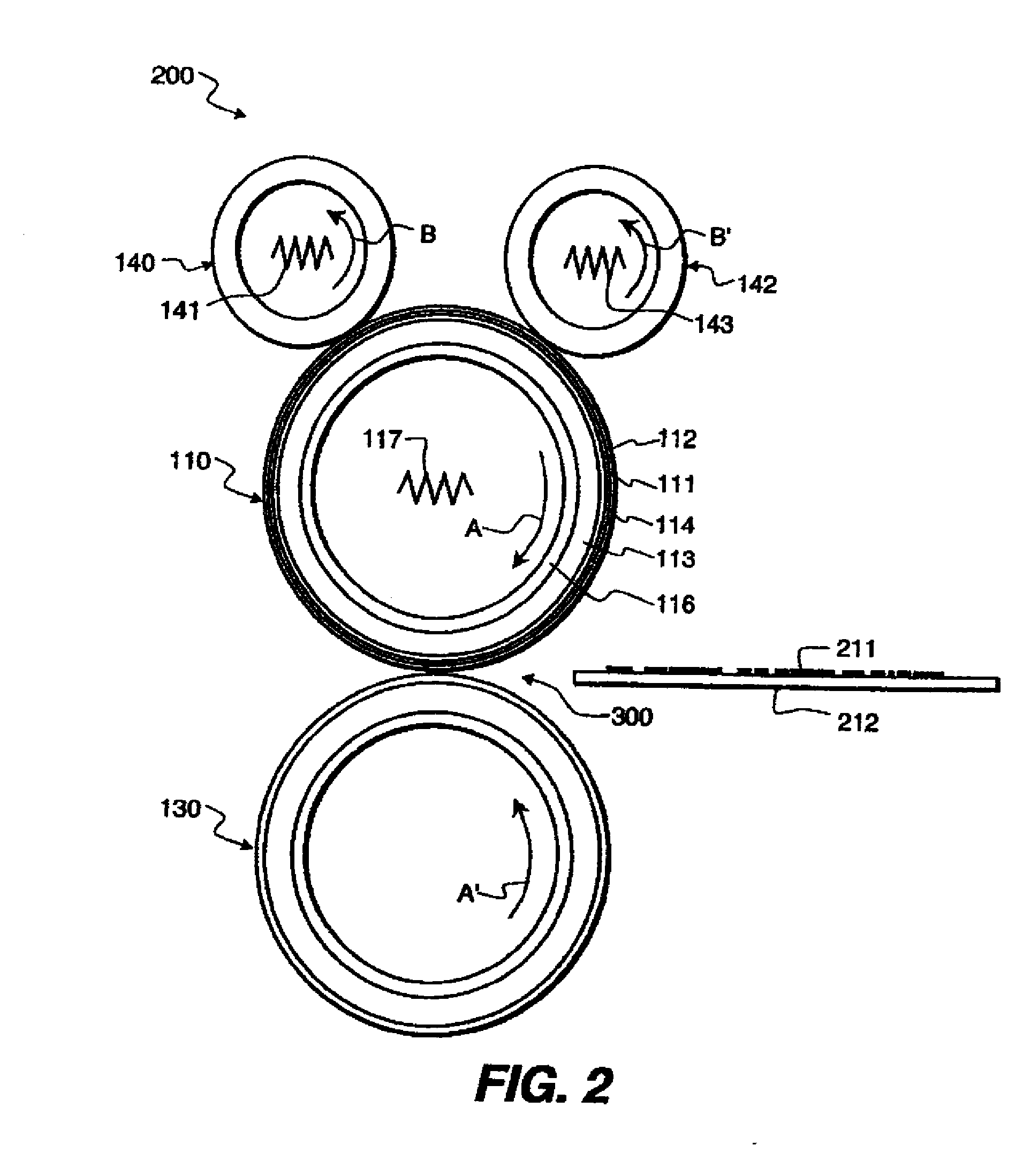Method of making fuser member
a technology of fuser and coating, which is applied in the field of electrostatic apparatus and coated fuser members, can solve the problems of non-compatibility of fluoropolymer resins, wrinkling artifacts, and adhesion of heat-softened toner particles, and achieve high print gloss and high loading condition
- Summary
- Abstract
- Description
- Claims
- Application Information
AI Technical Summary
Benefits of technology
Problems solved by technology
Method used
Image
Examples
example 1-3
[0076]A coated roller including, in order, a support, a base cushion primer layer and a silicone rubber layer, a fluoroelastomer layer, and a conformable fluorothermoplastic-PFA fluoropolymer resin semi-interpenetrating polymer network (SIPN) layer was prepared.
[0077]A steel cylindrical core with a 3.5 inch outer diameter and 15.2 inch length that was blasted with glass beads and cleaned and dried with dichloromethane was uniformly spray-coated with an adhesion promoter ShinEtsu X-33-176 to a uniform thickness of from 0.1 to 0.2 mil. The adhesion promoter was air dried for 15 minutes and placed in a convection oven at 325° F. for 45 minutes. A silicone base cushion layer is then applied to the treated core. The preferred addition cure silicone rubber X-34-1284 supplied by ShinEtsu Co is applied, for example, by injection-molding. The silicone rubber then cured 24 hrs at room temperature, and post cured 3 hrs at 200° C. in a convection oven. The resulting thickness of the base cushio...
PUM
| Property | Measurement | Unit |
|---|---|---|
| pressure | aaaaa | aaaaa |
| temperature | aaaaa | aaaaa |
| thickness | aaaaa | aaaaa |
Abstract
Description
Claims
Application Information
 Login to View More
Login to View More - R&D
- Intellectual Property
- Life Sciences
- Materials
- Tech Scout
- Unparalleled Data Quality
- Higher Quality Content
- 60% Fewer Hallucinations
Browse by: Latest US Patents, China's latest patents, Technical Efficacy Thesaurus, Application Domain, Technology Topic, Popular Technical Reports.
© 2025 PatSnap. All rights reserved.Legal|Privacy policy|Modern Slavery Act Transparency Statement|Sitemap|About US| Contact US: help@patsnap.com



